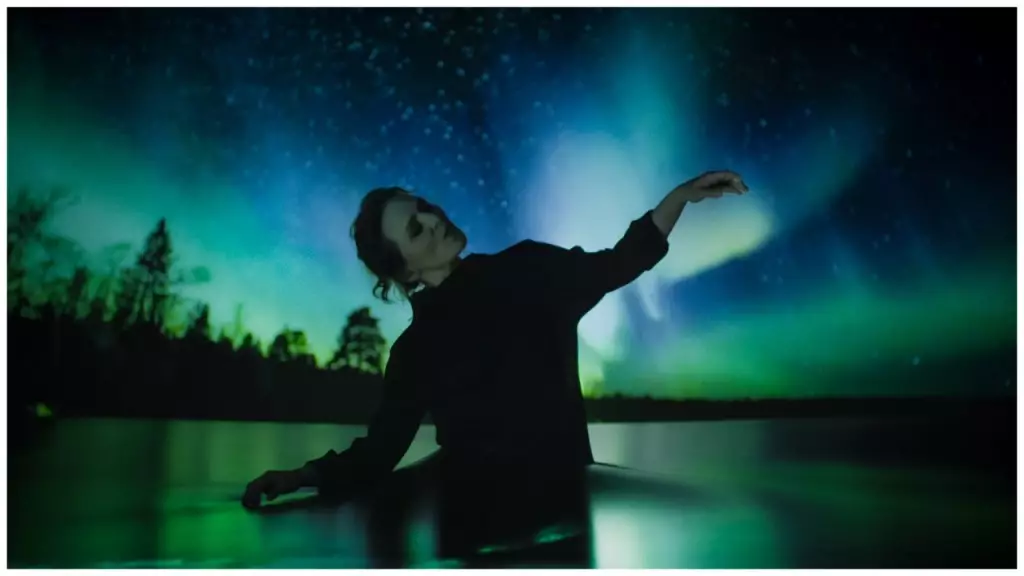The film “Miss Geraldine Flower” presents itself as a captivating inquiry into the complexities of memory and personal history. Shadows and whispers define the life of Geraldine Flower, a nominally ordinary woman whose world was steeped in letters, photographs, and old telexes, artifacts that were stumbled upon posthumously by her daughter, Zoe Flower. Rather than a conventional biopic, this experience manifests as an innovative song cycle, ingeniously woven together by the Icelandic singer Emilíana Torrini and the creative duo Iain Forsyth and Jane Pollard. Their collective approach mirrors their previous work, particularly “20,000 Days on Earth,” channeling rather than merely documenting a subject’s narrative.
The film eschews a linear plot progression, favoring instead a stylistic exploration of Geraldine’s essence. This takes the audience into an introspective journey rather than inviting them to merely observe. The allure lies in the ethereal blend of music and visual storytelling, forming an experience that could be described as psychedelic in nature. Geraldine, despite not being a household name, carries the weight of a life rich in emotional and sociocultural undertones, providing a fertile ground for artistic interpretation.
A poignant theme in “Miss Geraldine Flower” revolves around the lost art of letter writing, characterized as “a personal, private, permanent connection with another human being.” This perspective is conveyed powerfully by the film’s unseen narrator, voiced by Sophie Ellis-Bextor. The letters serve not only as a means of communication but as vessels of identity and aspiration, revealing shared vulnerabilities and intimate reflections that might otherwise remain unvoiced. Torrini echoes this sentiment, indicating that the discovery of these letters unearthed a wealth of inspiration she thought had long been dormant.
In the film’s opening scenes, viewers are drawn into an avant-garde world where letters transcend their physical form, becoming emotional conduits. The framing device showcases Geraldine, personified by actress Caroline Katz, seated in a timeless bistro. Here, she contemplates her past while engaging in a concurrent dialogue with Torrini. This metatextual interplay enhances the intimacy of the narrative, drawing viewers into a web of self-reflection.
The film’s score complements its visual artistry, creating an atmospheric tapestry that envelops the audience. Initially, Torrini’s lyrics may appear straightforward, yet they gradually reveal deeper layers, inviting comparisons to the avant-garde techniques pioneered by figureheads like William S. Burroughs. Simultaneously, choreographer Kate Coyne introduces a touch of whimsy with endearing movements that complement the otherworldly music, rendering the film not only an auditory delight but a visually captivating experience.
Even with a runtime of less than 90 minutes, the film delves into the intricacies of Geraldine’s life, touching upon her roots in Australia and Ireland and her subsequent migration to London. The film, presented in the guise of a ’70s educational television show hosted by Alice Lowe, encapsulates the nostalgia while maintaining a pivotal distance from its subject. This distance, rather than alienating, invites audiences to ponder and interpret rather than expect straight answers.
An intriguing layer is woven into the narrative through references to espionage and secret correspondences. The layering of context raises tantalizing questions about the nature of the letters: are they mere sentimental reflections, or do they hint at deeper, coded messages? This ambiguity tantalizes and engages the viewer’s curiosity. Throughout the experience, the film encourages speculation, opening avenues for multiple interpretations that challenge the viewer’s understanding of love, secrecy, and intrinsic personal expression.
Ultimately, “Miss Geraldine Flower” is more than an experimental biopic; it articulates a rich tapestry of human connectivity, potency of memory, and the significance of individual narratives. As the film unfolds the enigma of Geraldine Flower, it invites audiences to delve into their reflections, perhaps igniting a desire to reconnect with the lost art of letter-writing—one’s own immersive journey into personal histories, emotions, and relationships. The film stands as a testament to the notion that sometimes the most profound stories are those cloaked in mystery, awaiting discovery within the letters of life.

Leave a Reply